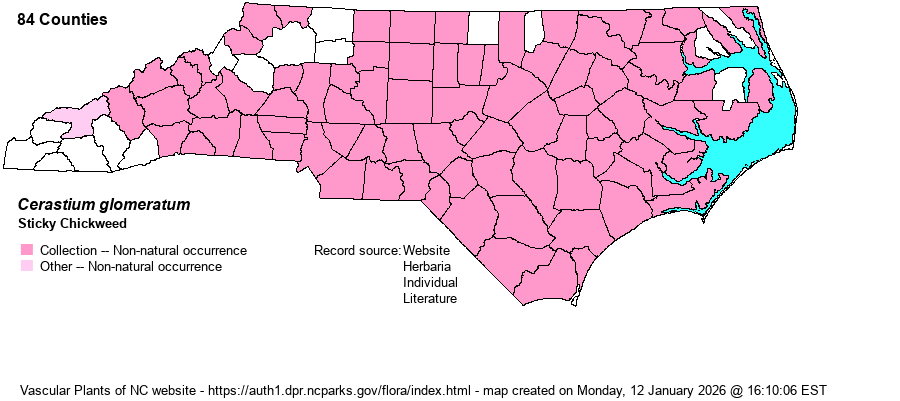| Author | Thuillier | |
| Distribution | Throughout the state; likely to be in every county, though possibly absent in the southwestern Mountains.
Native of Europe; in N.A. widespread, but absent from northern Great Plains states and provinces. | |
| Abundance | Common over most of the state, except rare in the southern Mountains. | |
| Habitat | Roadsides, railroad margins, yards and gardens, campuses, waste ground, fields, barnyards, vacant lots. | |
| Phenology | Flowering and fruiting February-May. | |
| Identification | Sticky Chickweed is our most widespread and common Cerastium; it may grow to a foot and a half tall, but usually less than a foot tall. The stems are sticky, with glandular hairs, as are branches and sepals. The sepals also have long non-glandular hairs, as does C. brachypetalum, but the inflorescence is compact (vs. open in the latter species). The petals and sepals are about the same length (3-5 mm), shorter than in C. fontanum. | |
| Taxonomic Comments | | |
| Other Common Name(s) | Sticky Mouse-ear Chickweed, Clammy Chickweed | |
| State Rank | SE | |
| Global Rank | GNR | |
| State Status | | |
| US Status | | |
| USACE-agcp | FACU link |
| USACE-emp | UPL link |

